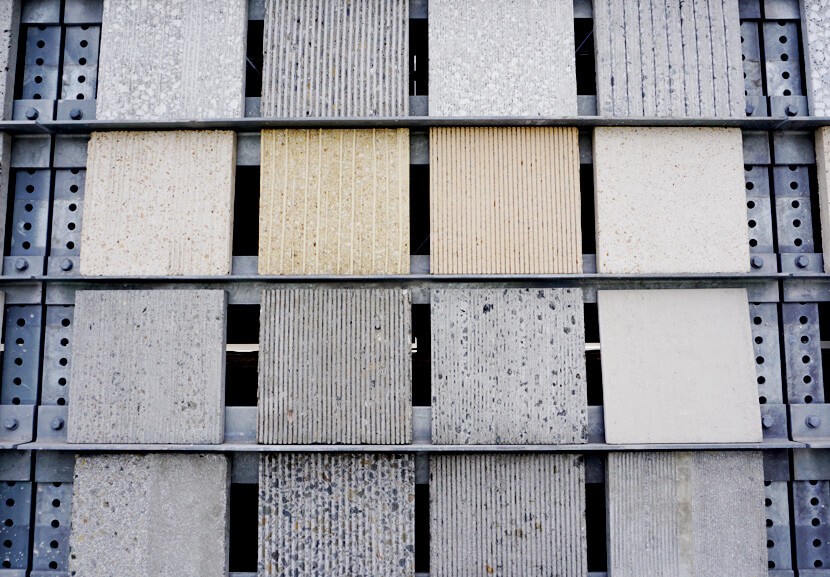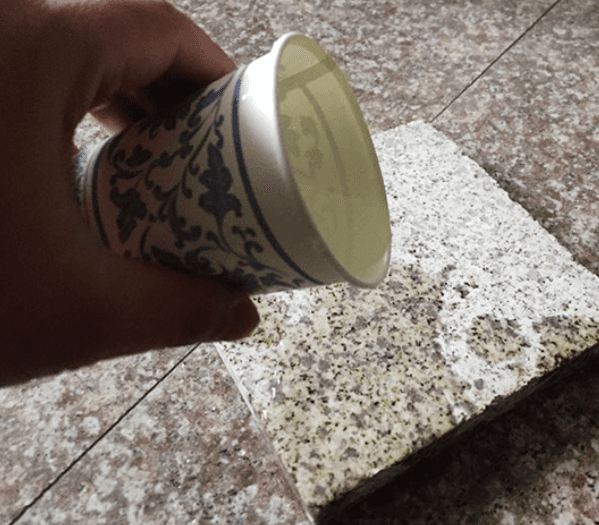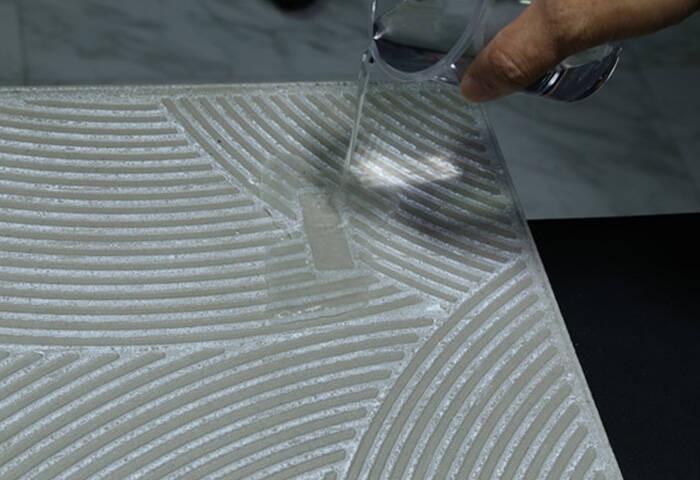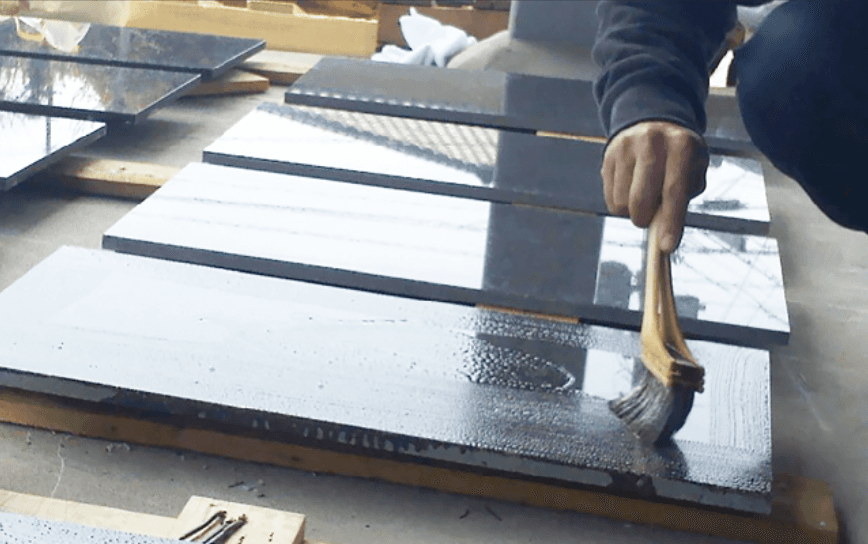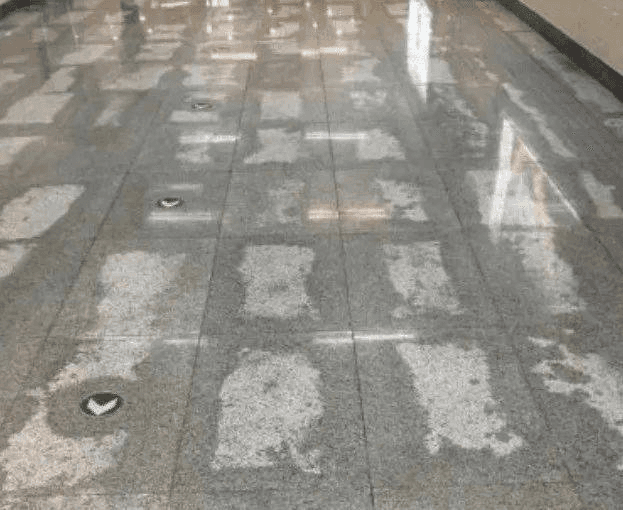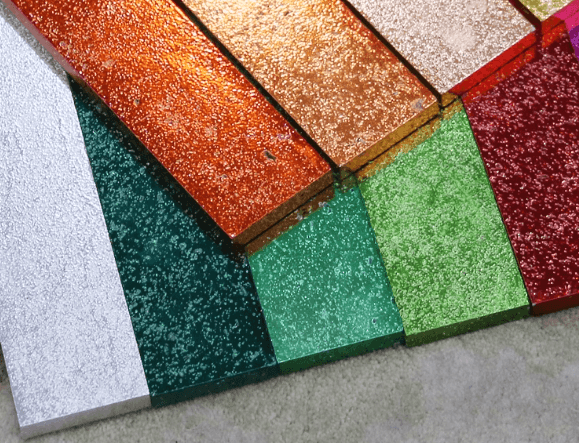Understanding Water Absorption in Stone Materials
Yuki
Sample Preparation: The sample should be a square with dimensions of 100mm × 100mm and a thickness corresponding to its intended use. A total of six samples should be tested each time.
Testing Procedure: First, clean the samples with clear water and dry them. Place them in a constant temperature drying oven at 60° ± 2°C for 48 hours until they reach a constant weight. Then, cool them in a desiccator to room temperature. At this point, weigh the samples to obtain their mass (W1), with readings accurate to 0.01g. Next, immerse the samples in clear water at 20° ± 5°C for 48 hours. After removing them, gently wipe the surface moisture with a wrung towel and immediately weigh the mass again (W2), also accurate to 0.01g.
Water absorption in stone refers to the ability of the stone to absorb water under standard atmospheric pressure. The water absorption rate of igneous rocks is generally very low, as water can only reach the opposite side through the capillary action of the stone. The absorbed moisture is measured and expressed as a percentage. The water absorption rate of stone is determined by the number and size of its pores, the arrangement of its particles, its susceptibility to moisture, and the ability to expel air from the pores.
Typically, the denser and harder the stone, the lower its water absorption rate. For example, hard igneous rocks usually have a water absorption rate of no more than 1%, while some dense sedimentary rocks are around 3%. Some loose sedimentary rocks can have rates as high as 8% or even higher. A higher water absorption rate indicates poorer engineering properties.
I. Methods for Testing the Water Absorption Rate of Natural Stone
Equipment and Measuring Tools:
Drying Oven: Temperature should be controlled within the range of 60° ± 2°C.
Balance: Maximum weighing capacity of 1000g, with a sensitivity of 10g.
Sample and Testing Steps:
Sample: The sample should be a square with dimensions of 100mm × 100mm and a thickness corresponding to its intended use. A total of six samples should be tested each time.
Testing Steps: First, clean the samples with clear water and dry them. Place them in a constant temperature drying oven at 60° ± 2°C for 48 hours until they reach a constant weight. Then, cool them in a desiccator to room temperature. At this point, weigh the samples to obtain their mass (W1), with readings accurate to 0.01g. Next, immerse the samples in clear water at 20° ± 5°C for 48 hours. After removing them, gently wipe the surface moisture with a wrung towel and immediately weigh the mass again (W2), also accurate to 0.01g.
II. Causes of Yellowing in White Marble
The yellowing of white marble can be attributed to various internal and external factors. Internally, the composition and structure of the stone play a significant role. The presence of iron minerals in the marble can lead to oxidation, resulting in yellowing. Externally, factors such as wear, improper maintenance, and environmental conditions can also contribute to the yellowing of white marble.
Internal Composition: The yellowing caused by the internal structure is influenced by external conditions, primarily water and oxygen in the air. Effectively preventing water from penetrating the stone can significantly inhibit yellowing.
Preventive Measures: To prevent yellowing, it is crucial to treat the back of the stone slabs with a waterproofing agent before installation. Traditional waterproof treatments may not effectively prevent yellowing, so newer, more effective waterproofing methods should be considered.
External Factors: Yellowing can also result from wear, improper care, and environmental conditions. For instance, using dirty mops or neglecting to clean the stone surface can lead to staining and discoloration.
In conclusion, understanding the water absorption characteristics of stone materials is essential for maintaining their aesthetic and structural integrity. Proper testing, preventive measures, and awareness of both internal and external factors can help ensure the longevity and beauty of stone products.
